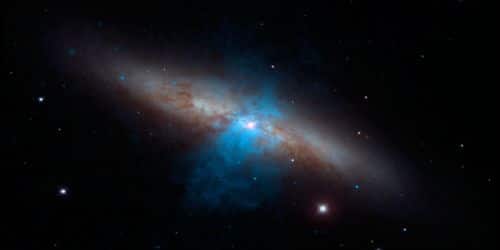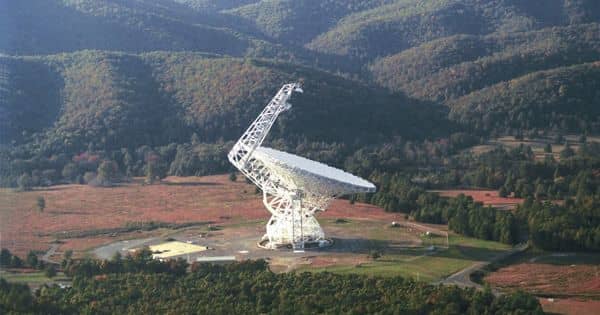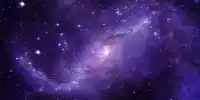Several laboratory studies are looking for axions—a contender for dark matter—using strong magnetic fields to turn axions into photons. Any of the strongest magnetic fields in the Universe accompany neutron stars, so researchers have also suggested the hunt for axion signals in neutron star radiation. Now, that’s just what a party did with two radio telescopes. In the 1970s, scientists discovered a flaw with the Modern Model of Particle Physics—a hypothesis that explains three of the four basic forces of existence (electromagnetic, weak, and strong interactions; the fourth is gravity). They found that, while the theory predicts that symmetry between particles and forces in our Universe and a mirror version should be broken, the experiments say otherwise.
Radio observations of neutron stars demonstrate a way to search for axions through their expected conversion to electromagnetic waves in a star’s magnetic field.
In the Regular Model, electromagnetism is symmetrical under C (charge conjugation), which substitutes particles with anti-particles; P (parity), which replaces all particles with their mirror image counterparts; and T (time reversal), which replaces correlations going forward in time with those going backward in time, as well as variations of symmetry operations CP, CT, PT, and CPT. This means that experiments that are susceptible to electromagnetic interference should not be able to differentiate the original structures from those that have been modified by any of the above-mentioned symmetry operations.
In the case of electromagnetic interaction, the principle is very well associated with the findings. As predicted, the difficulty resides with one of the two nuclear forces-“the strong interaction.” As it turns out, the principle permits breaches of the joint symmetry operation CP (reflecting particles in the mirror and then modifying the anti-particle particle) with both weak and strong interactions. To date, however, violations of CP have only been found due to weak interactions.

More precisely, due to weak interactions, CP violations occur at about 1-in-1,000 levels, and many scientists have predicted comparable levels of violations due to strong interactions. Yet experimentalists have investigated thoroughly, but to no avail, for CP violation. If there is a heavy interaction, it is suppressed by more than one billion (109).
In 1977, theoretical physicists Roberto Peccei and Helen Quinn suggested a potential solution: they speculated a new symmetry that suppresses CP-violating terms in a tight relationship, making the hypothesis fit the findings. Shortly thereafter, Steven Weinberg and Frank Wilczek – both of whom received the Nobel Prize in Physics in 1979 and 2004 respectively – discovered that this process is producing a brand new particle. Wilczek eventually nicknamed this new particle the “axion,” a common dish detergent of the same name, for its ability to “clean up” the CP problem.
The axion should be an incredibly light particle, extremely multiple, and free of charge. Owing to these properties, axions are ideal candidates for dark matter. Dark matter accounts for approximately 85 percent of the mass content of the Universe, but its underlying origin remains one of the greatest puzzles of modern science. Finding that dark matter is made up of axions would be one of the greatest discoveries of modern science.
In 1983, theoretical physicist Pierre Sikivie discovered that axions had another remarkable property: in the presence of an electromagnetic field, they were sometimes spontaneously converted to easily detectable photons. What was once thought to be completely undetectable turned out to be potentially detectable as long as there is a sufficient concentration of axions and strong magnetic fields.
Any of the greatest magnetic fields in the Universe accompany neutron stars. As these objects are also very huge, they could also attract vast amounts of dark matter axion particles. Physicists have therefore proposed the search for axion signals in the surrounding regions of neutron stars. Now, the international research team, including the Kavli Institute for Physics and Mathematics of the Universe (Kavli IPMU) postdoc Oscar Macias, has done just that with two radio telescopes—the Robert C. Byrd Green Bank Telescope in the US and the Effelsberg 100-m Radio Telescope in Germany.
The objectives of this search were two nearby neutron stars known to have strong magnetic fields, as well as the Milky Way center, which is estimated to host half a billion neutron stars. The team sampled radio frequencies in the 1-GHz range, corresponding to an axion mass of 5-11 micro electron volts. Since no signal has been seen, the team has been able to impose the strongest limits to date on dark matter axion particles of a few micro electron volts.
















